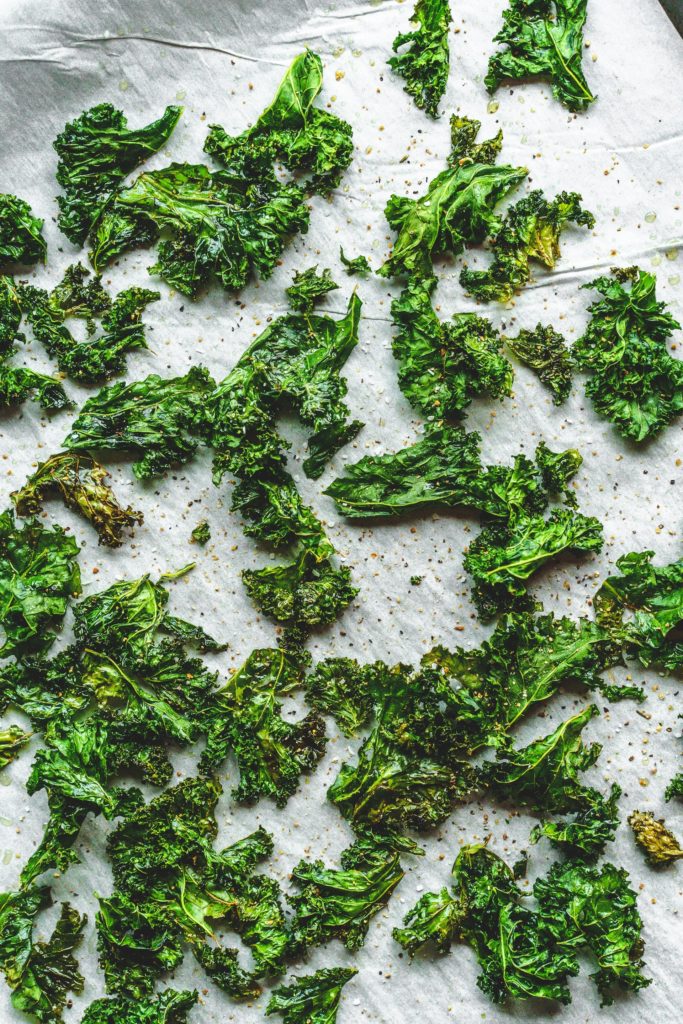The Ultimate Guide to Low Sodium Kale Chips: A Healthy Snack for Your Little Ones!
Hello, fantastic parents out there! There’s always a perfect blend of joy and fulfillment that accompanies being a parent. However, it also comes with demanding tasks like helping your children develop healthy eating habits.
In today’s world, with the growing consciousness about healthy eating, you might often wonder what snacks your children can enjoy that won’t jeopardize their health. Well, here is some good news! One fabulous snack alternative is right here at your fingertips. This guide aims to provide comprehensive information on low-sodium kale chips – an excellent snack option that is both tasty and nutritious. Brace yourselves and let’s dive in, shall we?!
What are Low Sodium Kale Chips?
Before we move any further, let’s demystify what exactly these delicious snacks are. Low sodium kale chips are a healthy snack alternative made from one of the most nutrition-dense vegetables available – you guessed it, KALE!
Why Choose Kale?
We know, lettuce and spinach are great, but when we talk about nutrient-dense foliage, Kale stands tall amongst its peers. This powerhouse veggie is not only low in calories but also loaded with vitamins A, K, and C. Plus, they’re a fantastic source of iron, fiber, and calcium. Isn’t it just kale-tastic?
Why ‘Low Sodium’?
Understanding the Sodium Story
Though sodium is an essential mineral needed for normal body function, too much can show up as an uninvited guest on your health’s doorstep. High sodium intake is associated with high blood pressure, heart disease, and stroke, among other conditions.
Hence, the ‘low sodium’ prefix isn’t just a fancy addition – it plays a crucial role in ensuring that our kale chips are not only wonderfully delicious but also super healthy. As parents, we always wish the best for our children. And yes, their daily sodium intake is a big part of that ‘best.’
No Compromise on Taste!
Let’s make this crystal-clear! Low sodium doesn’t mean low taste. Your kids won’t even miss the extra salt, we promise. When these green leafy goodness chips are prepared right and flavored appropriately, they can easily stand toe to toe with any high-sodium snacks.
Benefits of Low Sodium Kale Chips
Now that you’ve gotten a glimpse of what low-sodium kale chips are and why they’re great, let’s in the coming sections explore some of the many benefits these crisps can offer.
Stay tuned, dear parents, because up next is the recipe for these healthy, mouthwatering chips along with some fun and innovative ways to introduce them to your kids!

Preparing Low Sodium Kale Chips
Easy Peasy Kale-Chip Breezy
Preparing these scrumptious, healthy treats is as easy as 1, 2, 3! You will need:
– A bunch of fresh kale leaves
– Olive or coconut oil
– Your favorite no-salt or low-sodium seasonings
– Baking sheets
Preheat your oven to 300 degrees F (150 degrees C), wash the kale leaves, and then dry them thoroughly. You can then tear them into pieces (avoid the thick stems), toss them gently in the oil and your chosen seasoning before spreading them out on the baking sheets. Bake for about 10-15 minutes or until crispy. Voila! Your flavorsome, low-sodium kale chips are ready to be devoured!
Introducing Kale Chips to Your Children
Make it Fun!
To ignite your child’s interest in these healthy snacks, get creative! Involve them in the preparation process, let them choose the seasoning, or create a fun story around why this ‘great green veggie’ is so special. You could also serve these chips in vibrant snack bowls or give them cool names like “Hulk Chips” or “Fairy Crisps” to make them more appealing.
Conclusion
There’s just something heartwarming about providing your children with nutritious, delicious food options that boost their health rather than compromise it. Low sodium kale chips are such an option – wholesomely nutritious, surpassingly tasty, and incredibly easy to make!
Remember, dear parents, that getting our kids to eat healthier doesn’t have to be a tug of war. With a dash of creativity and a sparkling smile, we can introduce them to snacks like low-sodium kale chips that will both charm their taste buds and nurture their health.
Happy Snacking!
Preparing Low Sodium Kale Chips: A Guide for Parents
1. Understanding the Nutrition content
The first thing parents should know is about the nutritional content of the kale chips. They are rich in vitamins K, C, A, and contain considerable amounts of fiber and protein. Moreover, by preparing them with lower sodium, we ensure a healthier snack for our children.
2. Selecting the best Kale
Not all kale is created equal. Look for fresh, organically-grown kale with dark, lush leaves. The firmer and thicker the leaf, the better it will hold up during the baking process.
3. Washing and Preparing the Kale Properly
Make sure to wash kale leaves thoroughly to remove any dirt or residual pesticides. Pat them completely dry before usage because any remaining water can lead to steamed kale chips instead of crispy ones.
4. Using the right amount of Oil and Salt
To make low sodium kale chips, it’s important to pay attention to the amount of salt used. Instead of salt, you can use other seasonings like nutritional yeast, smoked paprika, or garlic powder to add flavor. Similarly, use just enough oil to lightly coat the leaves to ensure they get crispy without becoming overly greasy.
5. Baking at the right Temperature and Time
Finally, bake the chips at a lower temperature for a longer period of time to ensure they dry out and crisp up without burning. It could take up to 20 minutes, but make sure to check on them frequently to avoid burning.
Ultimately, creating low sodium kale chips at home is not only an easy task, but also one that allows parents to provide healthier snack alternatives for their children.
For more great articles please see here. For more information see here
Disclaimer
The articles available via our website provide general information only and we strongly urge readers to exercise caution and conduct their own thorough research and fact-checking. The information presented should not be taken as absolute truth, and, to the maximum extent permitted by law, we will not be held liable for any inaccuracies or errors in the content. It is essential for individuals to independently verify and validate the information before making any decisions or taking any actions based on the articles.




